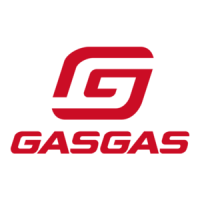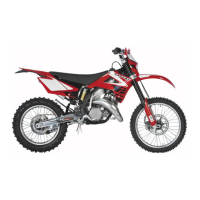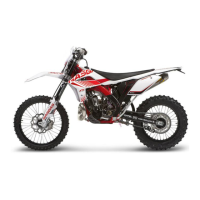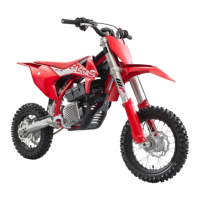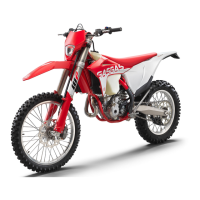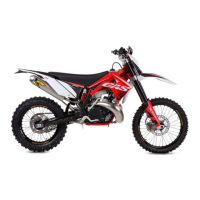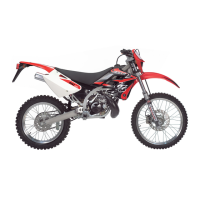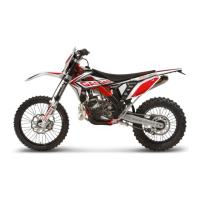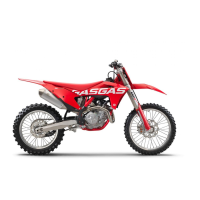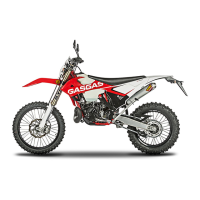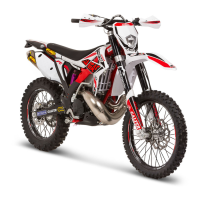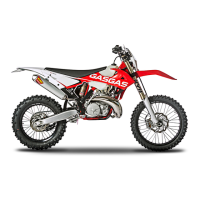Safety Advice Page: 6 Misuse Describes actions constituting misuse and the potential dangers to people, property, and environment.
Safety Advice Emphasizes the importance of following safety instructions and highlights warning labels on the product.
Overview of Labels Identifies and locates various important labels on the motorcycle for information and warnings.
Reporting Safety Defects Provides instructions on reporting vehicle defects that could cause accidents to NHTSA and GASGAS.
Consumer Rights Explains how to submit warranty claims and contact customer support for issues.
Tampering Warning Prohibits tampering with the noise control system and lists presumed tampering acts.
Safe Operation Covers essential safety precautions for operating the vehicle, including rider fitness and hazards.
Protective Clothing Stresses the importance of wearing appropriate protective clothing for riding to minimize injury risk.
Work Rules Provides guidelines for performing work on the vehicle, including ignition status and tool requirements.
Environment Advises on responsible motorcycle use and proper disposal of fluids and components.
Owner's Manual Encourages reading the manual for operation, handling, and service, and explains how to access it.
Controls Page: 18 Clutch Lever Identifies the clutch lever on the left handlebar and its automatic adjustment feature.
Hand Brake Lever Locates the hand brake lever on the right handlebar, which operates the front brake.
Throttle Grip Identifies the throttle grip located on the right side of the handlebar.
Horn Button Locates the horn button on the left handlebar and describes its basic and pressed states.
Light Switch Details the light switch on the left handlebar and its functions for low beam and high beam.
Turn Signal Switch Explains the turn signal switch on the left handlebar and its operation for left/right signals.
Emergency OFF Switch Describes the emergency OFF switch on the right handlebar and its function to interrupt ignition.
Start Button Identifies the start button on the right handlebar and its function to actuate the starter motor.
Combination Switch Explains the combination switch on the left handlebar for selecting riding modes and traction control.
ABS Button Identifies the ABS button next to the combination instrument and its use as an ABS warning lamp.
Seat Release Explains how to use the loop to unlock and remove the seat.
Grab Handles Identifies grab handles used for moving the motorcycle and for passenger support.
Passenger Foot Pegs Describes the folding mechanism of passenger foot pegs for use with or without a passenger.
Shift Lever Locates the shift lever mounted on the left side of the engine.
Foot Brake Lever Identifies the foot brake lever located in front of the right footrest for the rear brake.
Side Stand Locates the side stand and explains its use for parking and its link to the safety starting system.
Combination Instrument Introduces the combination instrument, covering its overview, activation, messages, and settings.
Riding Instructions Page: 35 Starting the Vehicle Explains the procedure for starting the vehicle, including safety warnings and system checks.
Starting Off Describes the process of starting off from a standstill, including clutch and throttle control.
Shifting, Riding Covers safe practices for shifting gears and general riding, including warnings about abrupt changes.
Quickshifter + Explains the function and operation of the Quickshifter+ for seamless gear changes.
Braking Provides comprehensive safety warnings and advice regarding braking performance and ABS.
Stopping, Parking Offers guidance on safely stopping and parking the motorcycle, including security and burn risks.
Transport Gives notes on preventing damage and fire hazards when transporting the motorcycle.
Refueling Provides critical safety information and procedures for refueling the vehicle.
Technical Data Page: 118 Engine Lists detailed technical specifications for the motorcycle's engine.
Capacities Lists the capacities for essential fluids like engine oil and coolant.
Chassis Details technical specifications related to the motorcycle's chassis, including frame, suspension, and dimensions.
Electrical System Lists technical specifications for various electrical components like battery, fuses, and lights.
Tires Provides technical specifications for the front and rear tires, including sizes and types.
Fork Lists technical data for the front fork, including damping settings and spring rates.
Shock Absorber Details technical specifications for the shock absorber, including damping and spring settings.
